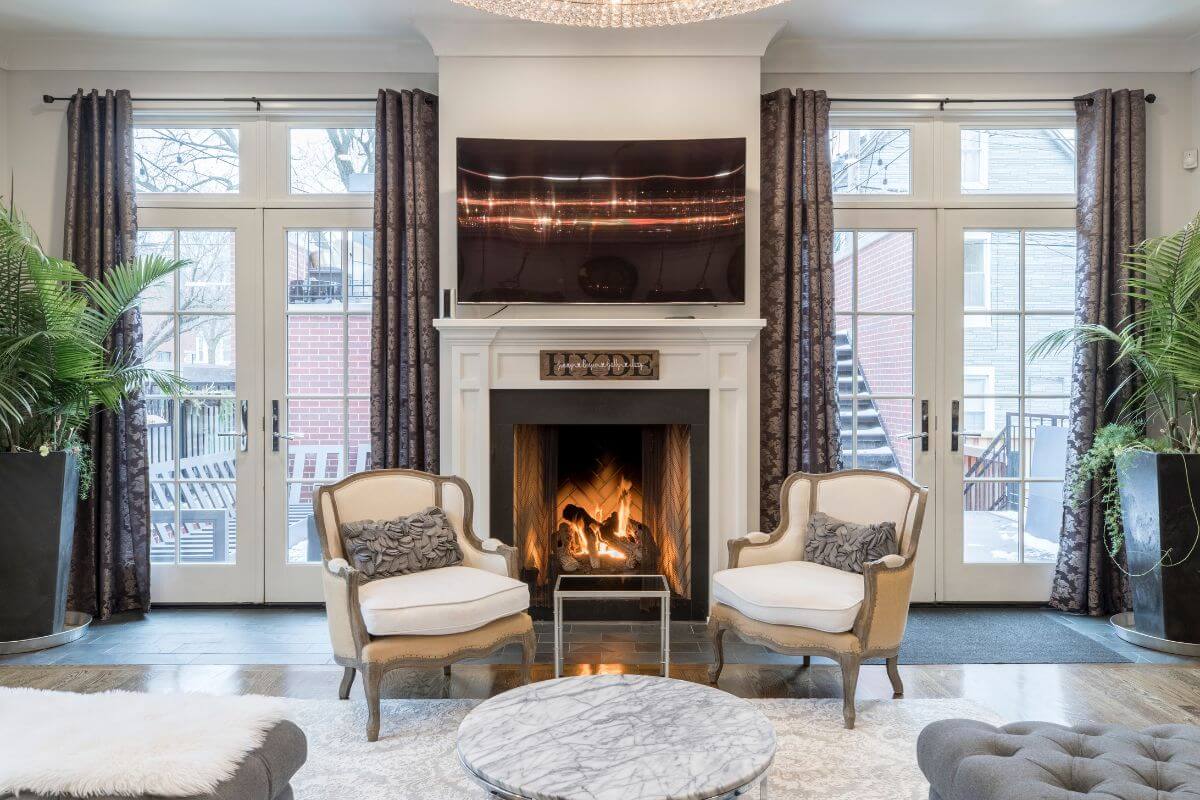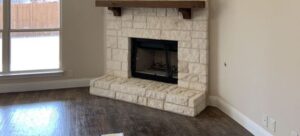Fireplaces are not only functional sources of warmth but also serve as focal points in our homes, adding to the overall ambiance and aesthetic appeal of a room. When choosing a fireplace, one crucial consideration is the size of the fireplace relative to the size of the room. Striking the right balance between these two elements is essential for both visual harmony and efficient heating. In this article, we’ll explore the factors to consider when determining the ideal fireplace size for your room.
Room Size Matters
Small Rooms
In smaller rooms, a large fireplace can overwhelm the space and make it feel cramped. Opting for a smaller fireplace or a compact, wall-mounted unit can be a better choice to maintain a cozy atmosphere without overpowering the room.
Large Rooms
In larger rooms, a tiny fireplace might get lost amidst the grandeur of the space. Here, a larger fireplace or a multi-sided fireplace that can be viewed from different angles may be more suitable to create a balanced and inviting environment.
Heating Efficiency
Proper Sizing
Choosing a fireplace that is appropriately sized for the room is essential for efficient heating. An oversized fireplace may generate excessive heat, leading to discomfort, while an undersized one might struggle to warm the space adequately. Seek advice from a professional to ensure the fireplace’s heating capacity matches the room’s dimensions.
Fuel Type
Different fuel types, such as wood-burning, gas, electric, or ethanol fireplaces, have varying heating capacities. Consider the fuel type that aligns with your heating needs and the room’s size. For instance, gas fireplaces often provide consistent and controllable heat, making them suitable for larger spaces.

Aesthetic Considerations
Proportion and Scale
The fireplace should complement the room’s overall design and scale. A massive, ornate fireplace can be a stunning focal point in a spacious living room, while a sleek, minimalist fireplace might be more appropriate for a contemporary-style bedroom.
Visual Impact
Think about the visual impact you want to achieve. A smaller, understated fireplace can create a cozy and intimate atmosphere, while a larger, more prominent one can make a bold statement in your home’s design.
Practicality and Safety
Clearances and Safety
Ensure that the fireplace size you choose adheres to safety regulations and clearances. Fireplaces should have adequate space around them to prevent fire hazards and allow for proper ventilation. Consult with a professional installer to ensure compliance with safety codes.
Maintenance
Consider the practicality of maintaining the fireplace. Larger fireplaces may require more extensive cleaning and maintenance, so factor in the time and effort you’re willing to invest in upkeep.
Personal Preference
Ultimately, the choice of fireplace size should align with your personal preference and how you intend to use the space. Consider your lifestyle, heating needs, and design sensibilities to find the perfect fireplace size that complements your room and enhances your home’s overall comfort and style.
Conclusion
Finding the right balance between fireplace size and room size is crucial for creating a harmonious and functional living space. Careful consideration of heating efficiency, aesthetic preferences, safety, and personal needs will guide you toward selecting the ideal fireplace that not only adds warmth but also enhances the beauty of your home. Whether you prefer a small, intimate fireplace or a grand centerpiece, the perfect fireplace size is the one that makes your room feel like a welcoming haven.
FAQs
1. What are the consequences of having an oversized fireplace in a small room?
- An oversized fireplace in a small room can make the space feel cramped and uncomfortable. It may also generate excessive heat, making the room too warm and uncomfortable.
2. Can an undersized fireplace adequately heat a large room?
- An undersized fireplace may struggle to provide sufficient heat for a large room. It’s important to choose a fireplace with the appropriate heating capacity for the room’s size.
3. How can I determine the right fireplace size for my room?
- To determine the right fireplace size, consider the room’s dimensions, heating needs, and design preferences. Consulting with a fireplace professional can help you make an informed decision.
4. What are the advantages of a multi-sided fireplace in a large room?
- A multi-sided fireplace, also known as a see-through or peninsula fireplace, can be a great choice for large rooms as it allows for viewing the fire from multiple angles. It can create a stunning focal point and provide even heating throughout the space.
5. Are there safety regulations for fireplace clearances in relation to room size?
- Yes, safety regulations specify minimum clearances around fireplaces to prevent fire hazards and ensure proper ventilation. These regulations are not solely dependent on room size but also on the type of fireplace and fuel source. Consult with a professional to ensure compliance.
6. Can I install a fireplace in a small bedroom?
- Yes, you can install a fireplace in a small bedroom, but it’s essential to choose a compact fireplace that fits the room’s scale. Electric or ethanol fireplaces can be good options for smaller spaces.
7. How can I make a small fireplace visually appealing in a large room?
- To make a small fireplace visually appealing in a large room, consider surrounding it with decorative elements like a stylish mantel, built-in shelving, or a distinctive hearth design. These additions can enhance the fireplace’s presence.
8. Is it possible to retrofit an existing fireplace to better suit a room’s size?
- Yes, it is possible to retrofit an existing fireplace to better suit a room’s size by adding a fireplace insert or changing the mantel and surround. However, it’s advisable to consult with a fireplace professional for guidance on the best approach.
9. Can I use a gas fireplace in a small room for both heating and aesthetic purposes?
- Yes, a gas fireplace can be an excellent choice for a small room as it provides efficient heating and offers aesthetic appeal. Gas fireplaces are often designed with convenience in mind and can be controlled easily.
10. What is the most important factor to consider when choosing a fireplace size for my room?
- The most important factor is to ensure that the fireplace size aligns with your heating needs, safety requirements, and the room’s aesthetics. Balancing these factors will help you select the ideal fireplace size for your space.
Remember that fireplace size is a critical aspect of both functionality and aesthetics, so it’s essential to carefully assess your specific room and preferences before making a decision.



